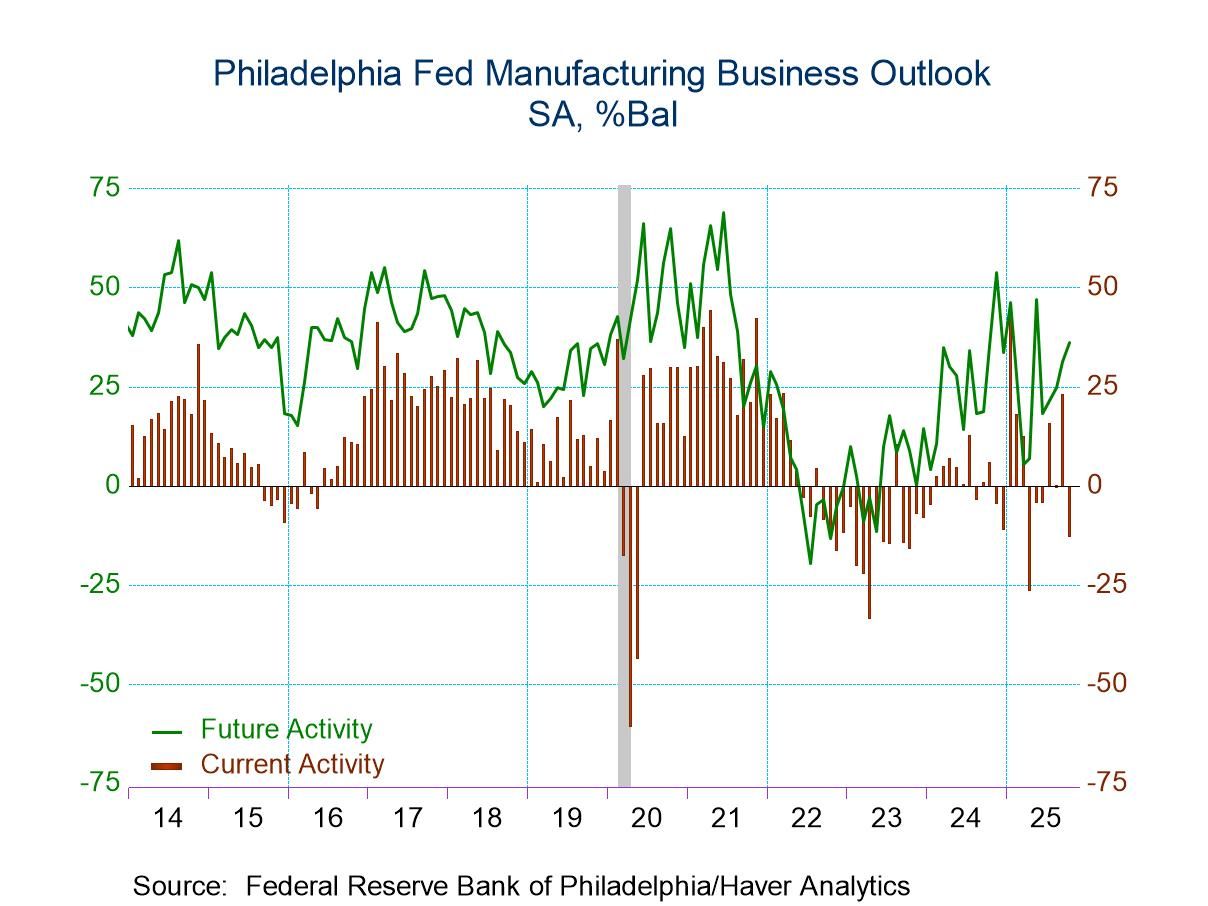 Global| Dec 12 2016
Global| Dec 12 2016U.S. Runs a $136.7 billion Budget Deficit in November
by:Tom Moeller
|in:Economy in Brief
Summary
The U.S. Treasury Department reported that during November, the federal government ran a budget deficit of $136.7 billion. A $125.0 billion deficit had expected in the Action Economics Forecast Survey. So far in FY'17, the federal [...]
The U.S. Treasury Department reported that during November, the federal government ran a budget deficit of $136.7 billion. A $125.0 billion deficit had expected in the Action Economics Forecast Survey. So far in FY'17, the federal government ran a $180.8 billion budget deficit compared to $201.1 billion in the first two months of FY'16.
Overall revenues increased 1.3% so far in FY'17 versus FY'16. Individual income taxes rose 5.2% y/y following a 0.3% rise in all of FY'16. Social insurance contributions increased 1.6% y/y, down from the FY'16 4.7% gain, while excise taxes fell 1.6% y/y, less than last year's 3.3% fall. Corporate income taxes declined by nearly two-thirds y/y following a 12.9% drop.
Government spending declined 2.4% y/y so far in FY'17 compared to 4.5% growth during all of last year. Medicare outlays declined 17.8% y/y after 8.8% growth in FY'16, and Income Security Program payments fell 11.2% y/y after a 1.0% rise. National Defense spending also was down by 3.7% y/y, continuing the weakness of the last several years. To the upside was spending on Health programs which grew by 5.2% y/y after 6.0% growth in FY'16. Social Security outlays also rose by 3.3% so far in FY'17, about the same as in FY'16. Spending on Education, Training, Employment & Social Services declined 18.6% y/y, while spending on Veterans Benefits & Services fell 21.9% y/y. Interest payments increased 17.5% in so far in FY'17 following 7.8% growth last year.
Haver's data on Federal Government outlays and receipts are contained in USECON. Considerable detail is given in the separate GOVFIN database. The Action Economics Forecast Survey numbers are in the AS1REPNA database.
| United States Government Finance | November | FY'16 | FY'15 | FY'14 | FY'13 | |
|---|---|---|---|---|---|---|
| Budget Balance | -- | $-136.7 bil. | $-587.4 bil. | $-438.9 bil. | $-483.4 bil. | $-680.2 bil. |
| As a percent of GDP | -- | 3.2% | 2.5% | 2.8% | 4.1% | |
| % of Total | ||||||
| Net Revenues (Fiscal Year 2017, Y/Y % Change) | 100 | 1.3% | 0.6% | 7.6% | 8.9% | 13.3% |
| Individual Income Taxes | 47 | 5.2 | 0.3 | 10.5 | 5.9 | 16.3 |
| Corporate Income Taxes | 9 | -63.2 | -12.9 | 7.2 | 17.3 | 12.9 |
| Social Insurance Taxes | 34 | 1.6 | 4.7 | 4.1 | 8.0 | 12.1 |
| Excise Taxes | 3 | -1.6 | -3.3 | 5.3 | 11.1 | 6.3 |
| Net Outlays (Fiscal year 2017, Y/Y % Change) | 100 | -2.4 | 4.5 | 5.3 | 1.4 | -2.4 |
| National Defense | 15 | -3.7 | 0.7 | -2.3 | -4.7 | -6.3 |
| Health | 13 | 5.2 | 6.0 | 17.8 | 14.3 | 3.3 |
| Medicare | 15 | -17.8 | 8.8 | 6.7 | 2.8 | 5.5 |
| Income Security | 13 | -11.2 | 1.0 | -0.9 | -4.3 | -1.1 |
| Social Security | 24 | 3.3 | 3.2 | 4.4 | 4.5 | 5.2 |
| Veterans Benefits & Services | 4 | -21.9 | 9.3 | 6.8 | 7.7 | 11.5 |
| Education, Training, Employment & Social Services | 3 | -18.6 | -10.2 | 34.7 | 25.9 | -21.9 |
| Interest | 6 | 17.5 | 7.8 | -1.8 | 2.8 | 0.4 |
Tom Moeller
AuthorMore in Author Profile »Prior to joining Haver Analytics in 2000, Mr. Moeller worked as the Economist at Chancellor Capital Management from 1985 to 1999. There, he developed comprehensive economic forecasts and interpreted economic data for equity and fixed income portfolio managers. Also at Chancellor, Mr. Moeller worked as an equity analyst and was responsible for researching and rating companies in the economically sensitive automobile and housing industries for investment in Chancellor’s equity portfolio. Prior to joining Chancellor, Mr. Moeller was an Economist at Citibank from 1979 to 1984. He also analyzed pricing behavior in the metals industry for the Council on Wage and Price Stability in Washington, D.C. In 1999, Mr. Moeller received the award for most accurate forecast from the Forecasters' Club of New York. From 1990 to 1992 he was President of the New York Association for Business Economists. Mr. Moeller earned an M.B.A. in Finance from Fordham University, where he graduated in 1987. He holds a Bachelor of Arts in Economics from George Washington University.






